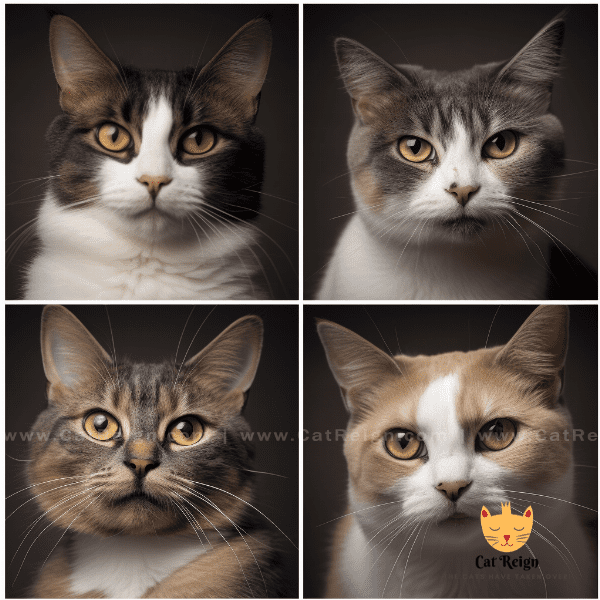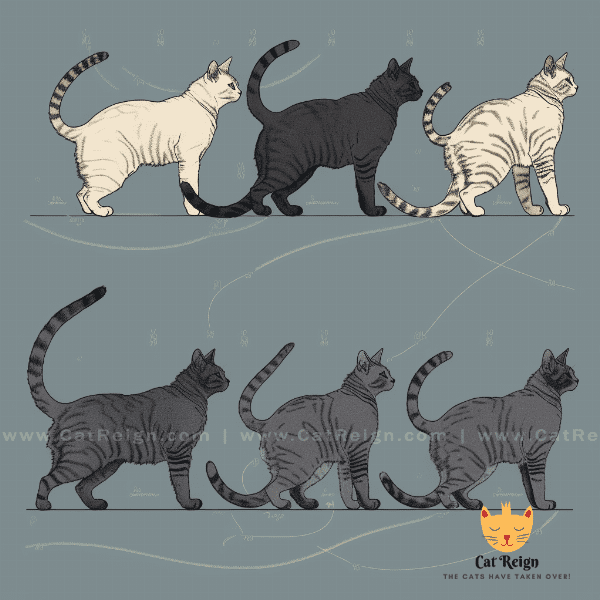Table of Contents
- Understanding the Importance of Cat Body Language
- Common Signs of Sadness in Cats
- Decoding Your Cat’s Facial Expressions
- Analyzing Your Cat’s Tail Positions
- Interpreting Your Cat’s Ear Movements
- Understanding Your Cat’s Vocalizations
- Recognizing Your Cat’s Posture
- Responding to Your Cat’s Sadness
- Helping Your Cat Cope with Emotional Distress
- Creating a Happy and Comfortable Environment for Your Cat.
Understanding the Importance of Cat Body Language
Understanding Cat body language is crucial for cat owners as it helps them interpret their cat’s emotions and behavior. While cats can’t speak like humans, they have their own unique way of communicating their feelings and intentions through body language. As such, being able to read your cat’s body language is an essential skill for any cat owner who wants to build a strong bond with their pet.
The Role of Body Language in Cat Communication
Cats use body language to communicate a wide range of emotions, including happiness, fear, aggression, and sadness. They do this through various body parts, such as the ears, tail, and eyes, as well as their vocalizations and posture.
The Benefits of Understanding Cat Body Language
Understanding your cat’s body language can have many benefits. Firstly, it can help you identify when your cat is happy, content, or stressed, and allow you to respond accordingly. This can be particularly helpful in situations where your cat is feeling anxious or upset, as it can help you provide them with the appropriate care and support.
Secondly, understanding cat body language can help you build a stronger bond with your pet. By being able to read their emotions and respond appropriately, you can develop a deeper understanding of your cat’s personality, preferences, and needs.
Lastly, understanding cat body language can also help you prevent potential conflicts with your cat. By recognizing the signs of aggression or fear, you can take steps to prevent your cat from feeling threatened or overwhelmed and avoid any potential attacks or aggressive behavior.
In summary, understanding cat body language is essential for any cat owner who wants to develop a strong bond with their pet and provide them with the best possible care and support. By learning to read your cat’s emotions and respond appropriately, you can ensure that they feel happy, content, and loved, and enjoy a long and healthy life with you.
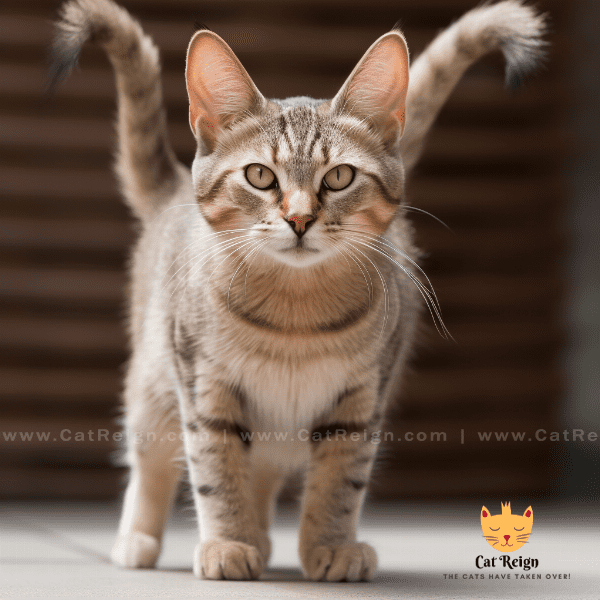
Common Signs of Sadness in Cats
As a cat owner, it’s important to be able to recognize when your cat is feeling sad or unhappy. While cats are known for their independent and aloof nature, they can also experience a range of emotions, including sadness, anxiety, and depression. Here are some common signs that your cat may be feeling sad:
Changes in Eating and Drinking Habits
One of the most common signs of Sadness in cats is a change in their eating and drinking habits. If your cat is feeling down, they may lose their appetite, stop drinking water, or show a lack of interest in their favorite foods. They may also become more picky about what they eat or drink, and may only eat or drink small amounts at a time.
Withdrawal or Hiding
When cats are feeling sad or upset, they may withdraw or hide from their owners and other pets. They may spend more time sleeping, or retreat to a quiet, secluded area of the house. They may also avoid contact with their owners, and may not respond to affection or play as they normally would.
Aggression or Destructive Behavior
Cats that are feeling sad or unhappy may also exhibit signs of aggression or destructive behavior. They may hiss, growl, or lash out at their owners or other pets, and may scratch or bite objects in the home. They may also urinate or defecate outside of their litter box, or display other forms of destructive behavior.
Changes in Grooming Habits
Cats that are feeling sad or depressed may also exhibit changes in their grooming habits. They may stop grooming themselves as frequently, leading to a dull, matted coat. They may also over-groom themselves, leading to bald spots or skin irritation.
Health Issues
Finally, cats that are feeling sad or unhappy may also experience a range of health issues. They may become more susceptible to infections, or may experience digestive problems or other health issues due to a weakened immune system.
In summary, recognizing the signs of sadness in cats is crucial for cat owners who want to provide their pets with the best possible care and support. By being able to identify when your cat is feeling sad or unhappy, you can take steps to provide them with the appropriate care and attention, and help them feel happy, healthy, and loved.

Decoding Your Cat’s Facial Expressions
Cats have a complex system of facial expressions that they use to communicate a wide range of emotions, from happiness and contentment to fear and anxiety. As a cat owner, being able to read your cat’s facial expressions is an essential part of understanding their emotions and needs. Here are some key facial expressions to look out for:
Eyes
A cat’s eyes are one of the most expressive parts of their face. When a cat is happy or relaxed, their eyes will appear wide and open, with their pupils constricted into small dots. On the other hand, when a cat is feeling anxious or fearful, their eyes may appear narrow or squinted, with their pupils dilated and larger than usual. Cats may also blink slowly as a sign of trust and affection.
Mouth
The position of a cat’s mouth can also reveal a lot about their emotions. When a cat is happy or relaxed, their mouth will be slightly open, with their lips slightly parted. However, when a cat is feeling fearful or anxious, their mouth may be tightly closed or pulled back in a snarl. Cats may also lick their lips or yawn excessively as a sign of stress or discomfort.
Ears
The position of a cat’s ears can also reveal a lot about their emotions. When a cat is feeling happy or relaxed, their ears will be pointed forward and slightly to the side. On the other hand, when a cat is feeling anxious or scared, their ears may be flattened against their head. Cats may also twitch their ears as a sign of curiosity or excitement.
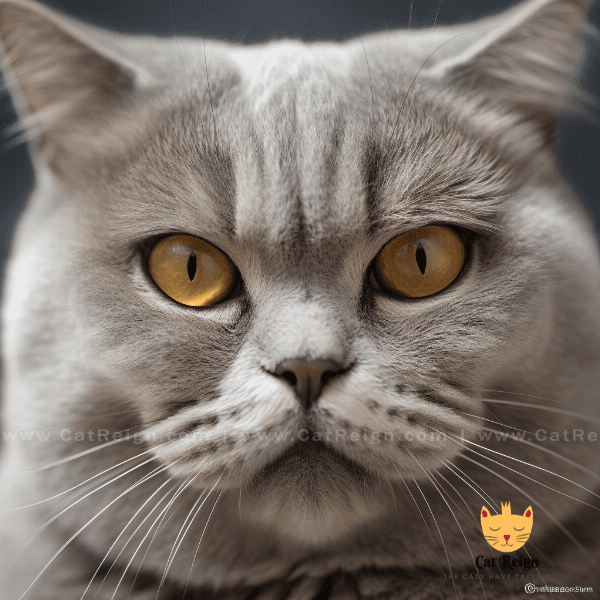
Analyzing Your Cat’s Tail Positions
Straight Up
When a cat’s tail is held straight up in the air, it is a sign of confidence, happiness, and contentment. Cats will often hold their tail in this position when they are feeling playful or affectionate, or when they are greeting their owners.
Curved Tip
A slightly curved tip of the tail is a sign that your cat is feeling relaxed and comfortable. This is a common tail position when cats are sitting or lying down, or when they are interacting with their owners.
Puffed Up
When a cat’s tail is puffed up, it is a sign of fear, anxiety, or aggression. This tail position indicates that your cat is feeling threatened or stressed, and may be preparing to defend themselves. Cats may also arch their backs and hiss or growl when their tail is puffed up.
Wagging
Contrary to dogs, when a cat wags their tail, it is not a sign of happiness. Instead, a cat wagging their tail can indicate that they are feeling agitated or irritated, and may be preparing to lash out or defend themselves.

Interpreting Your Cat’s Ear Movements
Forward
When a cat’s ears are pointed forward, it is a sign that they are feeling alert and interested in their surroundings. This ear position indicates that your cat is curious and engaged with what’s going on around them.
Backward
When a cat’s ears are pointed backward, it is a sign that they are feeling fearful or anxious. This ear position indicates that your cat is trying to make themselves as small as possible in order to avoid a perceived threat or danger.
Flat
When a cat’s ears are flat against their head, it is a sign that they are feeling scared, defensive, or aggressive. This ear position indicates that your cat is feeling threatened or stressed, and may be preparing to defend themselves.
Twitching
When a cat’s ears are twitching, it is a sign that they are feeling curious or alert. This ear movement indicates that your cat is processing information from their surroundings, and may be preparing to investigate or react to something.
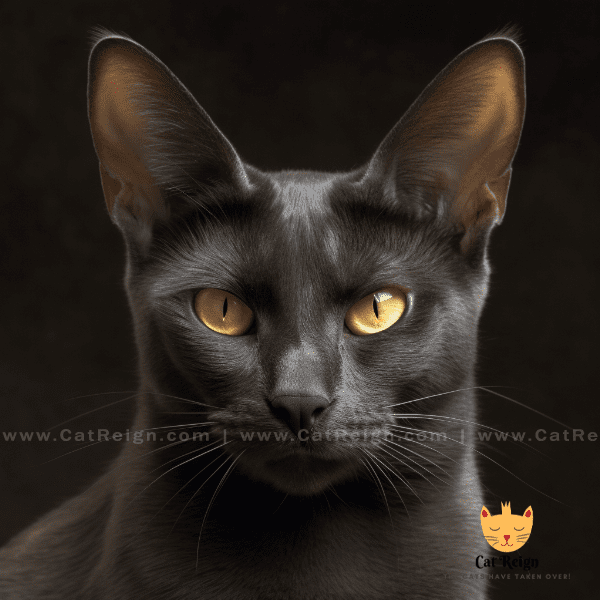
Understanding Your Cat’s Vocalizations
Meowing
Meowing is the most common vocalization that cats use to communicate with their owners. While meowing can mean many different things, from greeting to demanding attention, it is usually a sign that your cat wants something from you. Pay attention to the pitch, tone, and volume of your cat’s meows, as this can give you clues about their emotional state and intentions.
Purring
Purring is a sign that your cat is feeling happy and content. Cats will often purr when they are being petted or cuddled, or when they are feeling relaxed and comfortable. Purring can also be a self-soothing behavior that cats use to calm themselves down in stressful situations.
Growling
Growling is a sign that your cat is feeling aggressive or defensive. Cats will often growl when they are feeling threatened or territorial, and may lash out with their claws or teeth if they feel like their space is being invaded.
Chirping
Chirping is a sign that your cat is feeling happy and playful. Cats will often chirp when they are playing with toys or interacting with their owners, and may use chirping as a way to communicate their excitement or pleasure.
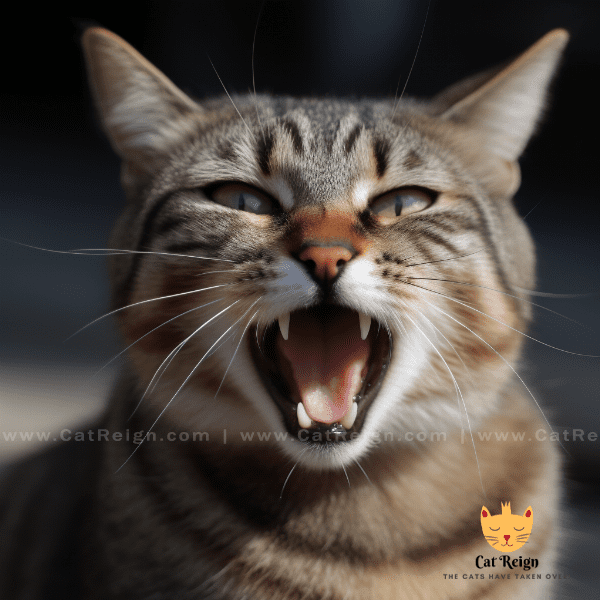
Recognizing Your Cat’s Posture
Cats use their body posture to communicate a wide range of emotions and intentions. As a cat owner, understanding your cat’s posture is an important part of interpreting their behavior and providing them with the appropriate care and attention. Here are some key postures to look out for:
Relaxed
When a cat is feeling relaxed and comfortable, their body will be loose and flexible. Their back will be straight or slightly arched, and their tail will be held in a natural position. Their eyes may be half-closed or fully closed, and they may be purring or kneading their paws.
Tense
When a cat is feeling tense or stressed, their body will be stiff and rigid. They may arch their back, puff up their fur, and hold their tail high or low. Their eyes may be wide open or dilated, and they may be hissing or growling as a sign of aggression or fear.
Defensive
When a cat is feeling defensive or threatened, they may adopt a defensive posture to protect themselves. They may flatten their ears against their head, tuck their tail between their legs, and crouch low to the ground. They may also hiss, growl, or lash out with their claws or teeth if they feel like they are in danger.
Aggressive
When a cat is feeling aggressive or territorial, they may adopt an aggressive posture to intimidate their perceived threat. They may arch their back, puff up their fur, and hold their tail high or low. They may also hiss, growl, or lash out with their claws or teeth as a warning to back off.
Playful
When a cat is feeling playful, they may adopt a playful posture to engage with their owner or other pets. They may crouch low to the ground, wiggle their hindquarters, and pounce on their target. Their tail may be held high and twitching in excitement.
In summary, recognizing your cat’s posture is an important part of interpreting their behavior and emotions. By paying attention to their body language, you can gain valuable insights into your cat’s emotional state and respond appropriately, providing them with the appropriate care and support.

Responding to Your Cat’s Sadness
Cats, like humans, can experience sadness and depression. As a cat owner, it is important to recognize the signs of sadness in your cat and respond with appropriate care and attention. Here are some tips for responding to your cat’s sadness:
Observe their behavior
The first step in responding to your cat’s sadness is to observe their behavior and look for signs of distress. Pay attention to their body language, vocalizations, and other cues, such as changes in appetite, sleep patterns, or grooming habits. This will help you identify if your cat is feeling sad or depressed.
Provide comfort and affection
One of the best ways to respond to your cat’s sadness is to provide them with comfort and affection. Spend time with your cat, cuddling, petting, and talking to them in a soothing voice. This can help to alleviate their stress and anxiety, and make them feel loved and cared for.
Create a stimulating environment
Cats can become bored and lethargic when they are feeling sad or depressed. To help boost their mood, create a stimulating environment for them with toys, scratching posts, and perches. This can provide them with the necessary mental and physical stimulation to keep them active and engaged.
Stick to a routine
Cats thrive on routine, and disruptions to their daily schedule can contribute to feelings of sadness and anxiety. To help your cat feel more secure and comfortable, stick to a regular routine for feeding, playtime, and other activities.
.
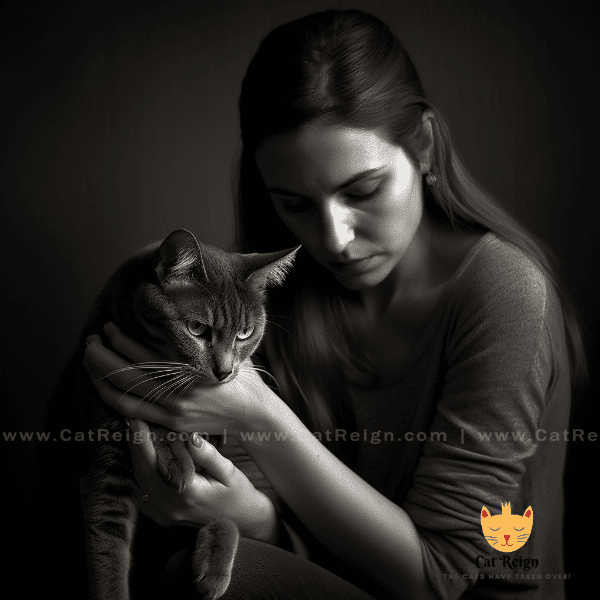
Helping Your Cat Cope with Emotional Distress
Emotional distress can have a profound impact on a cat’s physical and mental health. As a cat owner, it is important to help your cat cope with emotional distress and provide them with the appropriate care and support. Here are some tips for helping your cat cope with emotional distress:
Identify the source of stress
The first step in helping your cat cope with emotional distress is to identify the source of their stress. This can be anything from a change in their environment, to a new pet or family member, to an underlying medical condition. Once you have identified the source of their stress, you can take steps to address it and alleviate their distress.
Create a safe and secure environment
Cats need a safe and secure environment in which to feel comfortable and relaxed. Provide your cat with a cozy, quiet space where they can retreat when they feel stressed or anxious. Make sure they have access to fresh water, food, and litter, and keep their environment clean and free of clutter.
Provide mental and physical stimulation
Cats need mental and physical stimulation to stay healthy and happy. Provide your cat with plenty of toys, scratching posts, and perches to keep them active and engaged. Play with your cat regularly to help alleviate boredom and provide a healthy outlet for their energy.
Use pheromone therapy
Pheromone therapy can be an effective way to help cats cope with emotional distress. Synthetic pheromones can help to calm and soothe cats, reducing feelings of anxiety and stress. Consult with your veterinarian to determine if pheromone therapy is right for your cat.
Consult with a veterinarian
If your cat’s emotional distress persists despite your efforts to help them, it may be time to consult with a veterinarian. Your vet can help to identify any underlying medical conditions that may be contributing to your cat’s distress, and recommend appropriate treatment options.
In summary, helping your cat cope with emotional distress requires a combination of identification, security, stimulation, and veterinary care. By creating a safe and secure environment, providing mental and physical stimulation, using pheromone therapy, and consulting with a veterinarian as needed, you can help your cat manage their emotional distress and live a healthy, happy life.
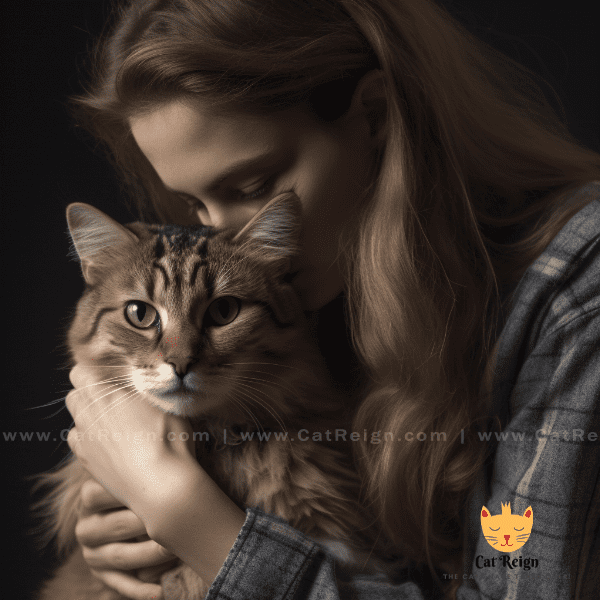
Creating a Happy and Comfortable Environment for Your Cat.
Creating a happy and comfortable environment for your cat is essential for their physical and emotional well-being. Here are some tips for creating a happy and comfortable environment for your cat:
Provide comfortable resting areas
Cats love to sleep and rest, so it’s important to provide them with comfortable resting areas. Make sure they have access to cozy beds, blankets, or cushions, and place them in quiet, cozy corners of your home.
Create a play area
Cats need mental and physical stimulation to stay healthy and happy, so create a designated play area for them. Provide them with plenty of toys, scratching posts, and climbing structures to keep them engaged and entertained.
Offer a variety of foods
Cats can be finicky eaters, so offer them a variety of foods to keep them interested in their meals. Consider rotating their food flavors and textures, and make sure they have access to fresh, clean water at all times.
Provide a clean litter box
Cats are naturally clean animals and need a clean litter box to feel comfortable and relaxed. Scoop their litter box regularly and change it completely every week. Provide them with enough litter boxes to avoid any territorial issues.
Keep their environment safe
Cats are curious and can get into mischief, so it’s important to keep their environment safe. Remove any potential hazards, such as toxic plants, sharp objects, or loose cords. Make sure windows and balconies are secured, and provide them with plenty of scratching posts to avoid damage to your furniture.
Give them attention and affection
Cats thrive on attention and affection, so make sure you spend plenty of quality time with your cat. Cuddle them, pet them, and talk to them in a soothing voice to make them feel loved and cared for.
In summary, creating a happy and comfortable environment for your cat involves providing them with comfortable resting areas, creating a play area, offering a variety of foods, providing a clean litter box, keeping their environment safe, and giving them attention and affection. By following these tips, you can help your cat live a healthy, happy life.



